Top 10 Most Beautiful Buildings In The U.S
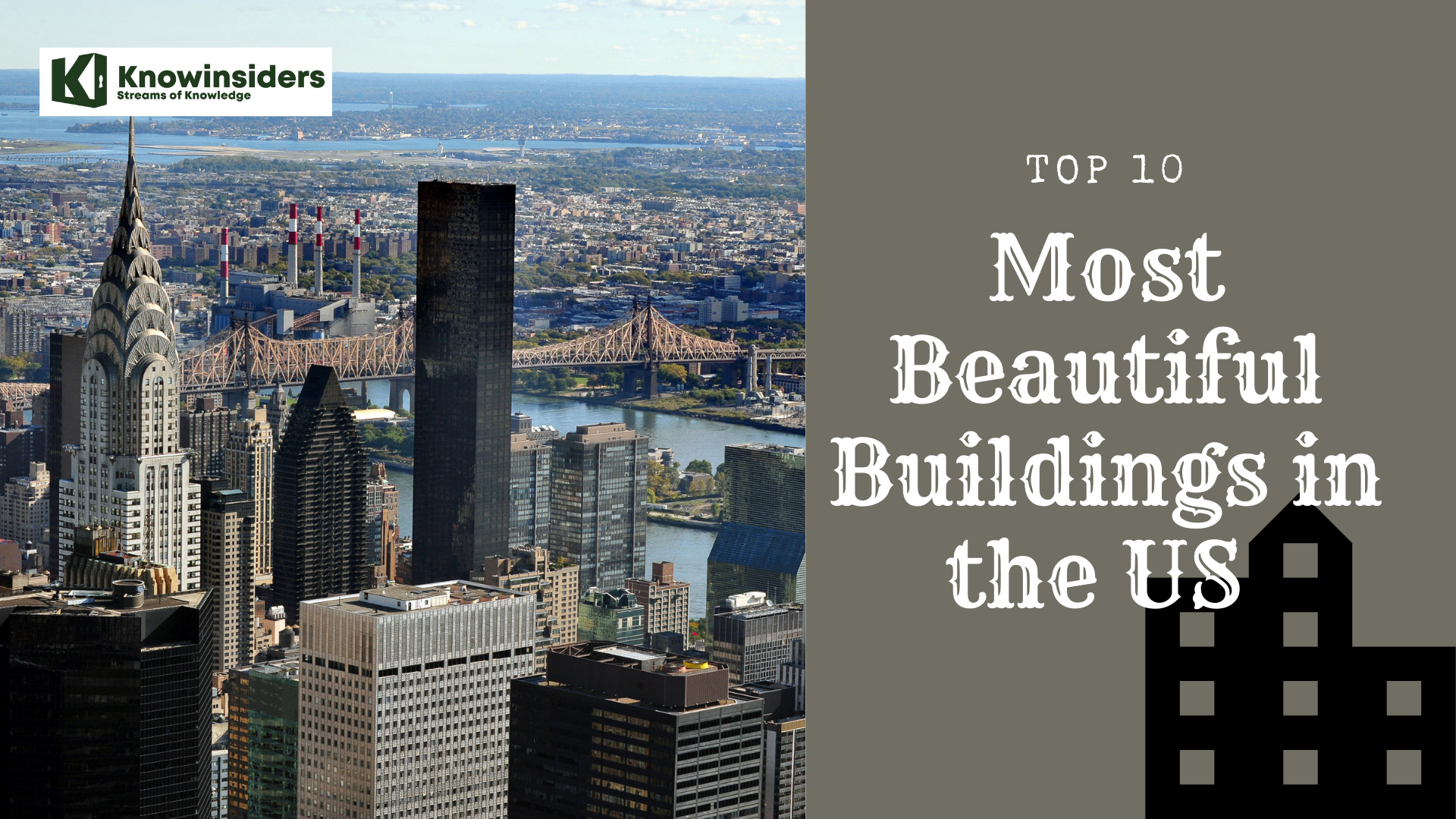 |
| Top 10 most beautiful (iconic) buildings in the US - Konowinsider.com |
Compared to the rest of the world, American architecture is noticeably younger. In fact, its modern residents have only been designing and constructing large buildings for a couple of hundred years – as opposed to several hundred or even thousands of years in Europe, Africa and Asia.
But older isn’t always better. What’s more, the USA’s penchant for doing things in its own, often regionally distinctive and stubborn way has resulted in hundreds of innovative and eclectic US buildings. When it comes to sightseeing, then, where’s the best place to start?
Here are the top 10 most celebrated buildings in the country’s relatively young but impressive history, as voted by the American Institute of Architects.
List of top 10 most beautiful buildings in the US
10. Vietnam Veterans Memorial, Washington, DC
9. Chrysler Building, New York City
8. Biltmore Estate, Asheville, N.C.
7. Lincoln Memorial, Washington, DC
6. United States Capitol, Washington, DC
5. Golden Gate Bridge, San Francisco
4. Jefferson Memorial, Washington, DC
3. Washington National Cathedral, Washington, DC
2. The White House, Washington, DC
1. Empire State Building, New York City
The top 10 most beautiful buildings in the U.S
10. Vietnam Veterans Memorial, Washington, DC
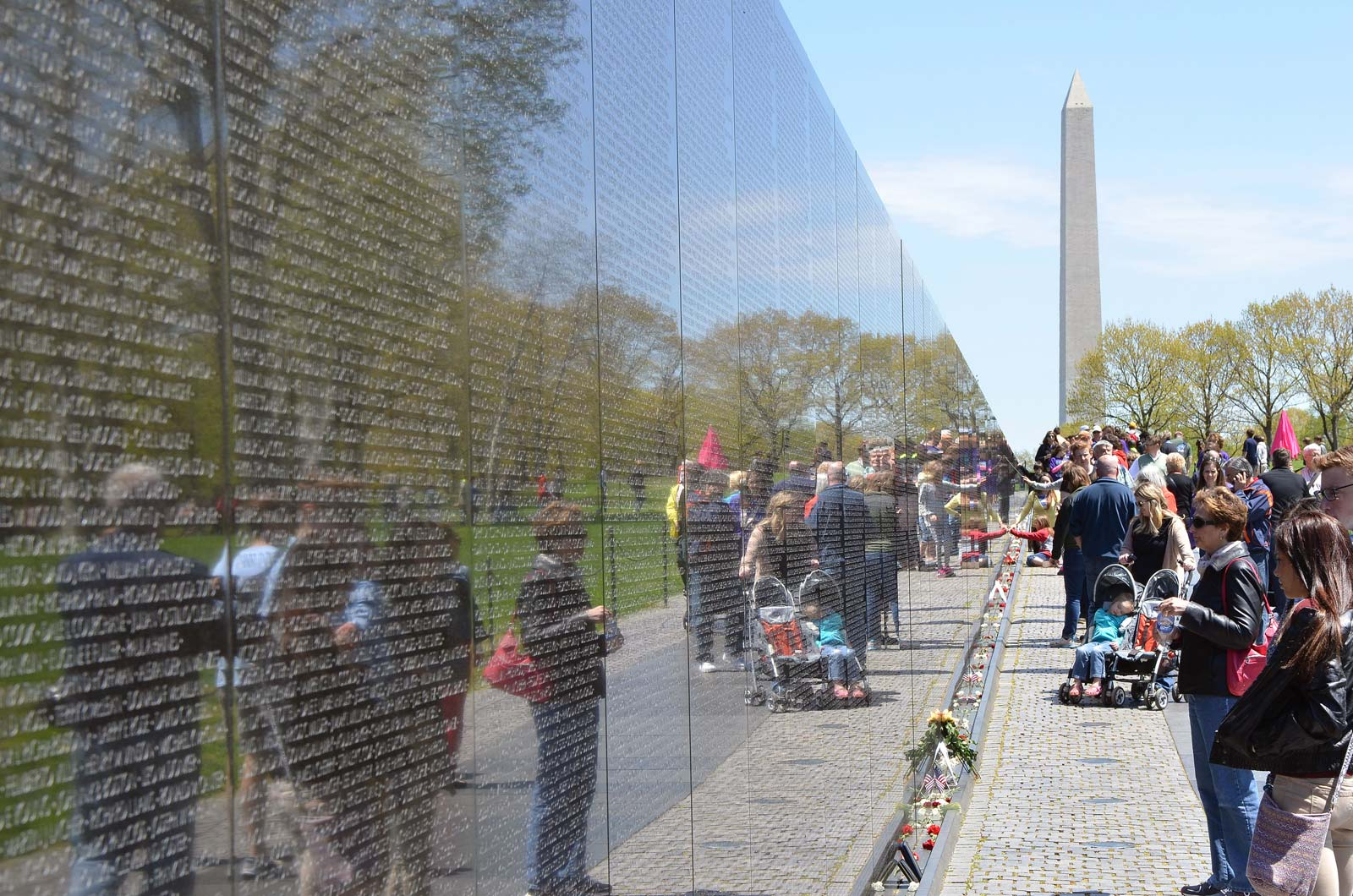 |
| Photo: Britannica |
The Vietnam Veterans Memorial is a U.S. national memorial in Washington, D.C., honoring service members of the U.S. armed forces who fought in the Vietnam War. The 2-acre (8,100 m2) site is dominated by a black granite wall engraved with the names of those service members who died as a result of their service in Vietnam and South East Asia during the war. The wall, completed in 1982, has since been supplemented with the statue The Three Soldiers and the Vietnam Women's Memorial.
The memorial is in Constitution Gardens, adjacent to the National Mall and just northeast of the Lincoln Memorial. The memorial is maintained by the National Park Service, and receives around 3 million visitors each year. The Memorial Wall was designed by American architect Maya Lin. In 2007, it was ranked tenth on the "List of America's Favorite Architecture" by the American Institute of Architects. As a National Memorial, it is listed on the National Register of Historic Places.
9. Chrysler Building, New York City
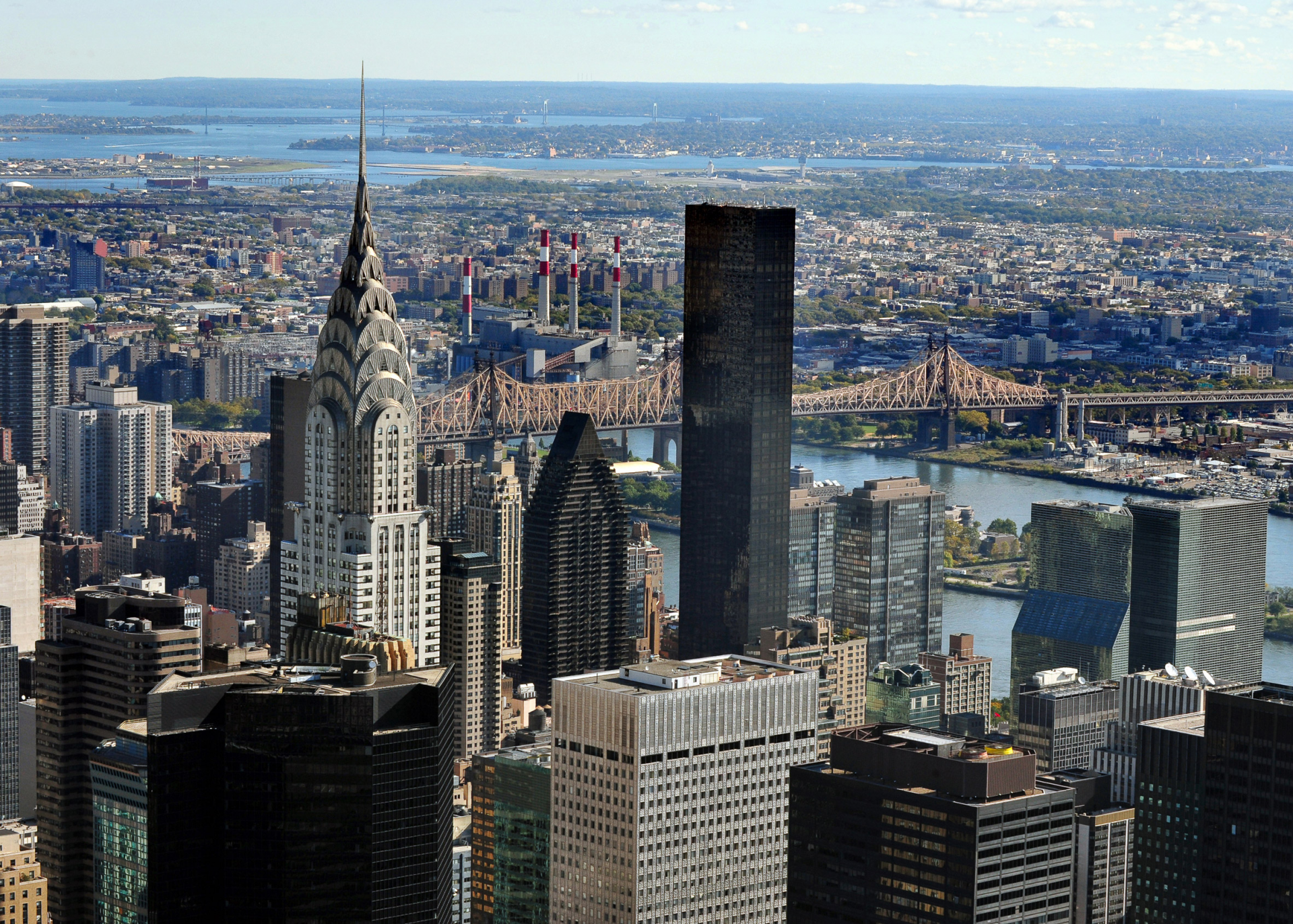 |
| Photo: Getty Images |
The Chrysler Building is an Art Deco skyscraper in the Turtle Bay neighborhood on the East Side of Manhattan,New York City, at the intersection of 42nd Street and Lexington Avenue near Midtown Manhattan. At 1,046 feet (319 m), it is the tallest brick building in the world with a steel framework, and was the world's tallest building for 11 months after its completion in 1930. As of 2019, the Chrysler is the 11th-tallest building in the city, tied with The New York Times Building.
Originally a project of real estate developer and former New York State Senator William H. Reynolds, the building was constructed by Walter Chrysler, the head of the Chrysler Corporation. The construction of the Chrysler Building, an early skyscraper, was characterized by a competition with 40 Wall Street and the Empire State Building to become the world's tallest building. Although the Chrysler Building was built and designed specifically for the car manufacturer, the corporation did not pay for its construction and never owned it; Walter Chrysler decided to fund the entire cost personally so his children could inherit it. An annex was completed in 1952, and the building was sold by the Chrysler family the next year, with numerous subsequent owners.
When the Chrysler Building opened, there were mixed reviews of the building's design, ranging from views of it as inane and unoriginal to the idea that it was modernist and iconic. Perceptions of the building have slowly evolved into its now being seen as a paragon of the Art Deco architectural style; and in 2007, it was ranked ninth on the List of America's Favorite Architecture by the American Institute of Architects. The building was designated a New York City landmark in 1978, and was added to the National Register of Historic Places as a National Historic Landmark in 1976.
8. Biltmore Estate, Asheville, N.C.
 |
| Photo: www.biltmore.com |
Biltmore Estate is a historic house museum and tourist attraction in Asheville, North Carolina. Biltmore House, the main residence, is a Châteauesque-style mansion built for George Washington Vanderbilt II between 1889 and 1895 and is the largest privately owned house in the United States, at 178,926 square feet (16,622.8 m2) of floor space (135,280 square feet of living area). Still owned by George Vanderbilt's descendants, it remains one of the most prominent examples of Gilded Age mansions.
Biltmore House had electricity from the time it was built, though initially with DC, due to Vanderbilt's friendship with Thomas Edison. With electricity less safe and fire more of a danger at the time, the house had six separate sections divided by brick fire walls.
Vanderbilt paid little attention to the family business or his own investments. It is believed that the construction and upkeep of Biltmore depleted much of his inheritance.
7. Lincoln Memorial, Washington, DC
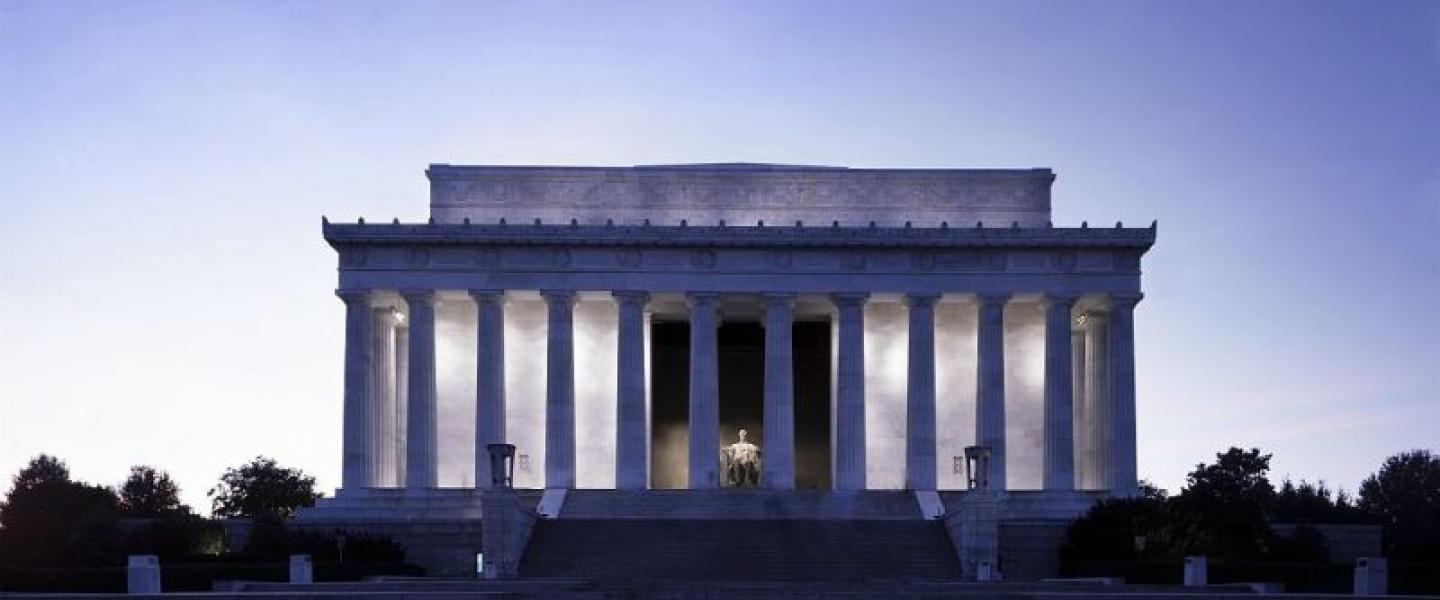 |
| Photo: Washington DC |
The Lincoln Memorial is a US national memorial built to honor the 16th president of the United States, Abraham Lincoln. It is on the western end of the National Mall in Washington, D.C., across from the Washington Monument, and is in the form of a neoclassical temple. The memorial's architect was Henry Bacon. The designer of the memorial interior's large central statue, Abraham Lincoln (1920), was Daniel Chester French; the Lincoln statue was carved by the Piccirilli Brothers. The painter of the interior murals was Jules Guerin, and the epithet above the statue was written by Royal Cortissoz. Dedicated in May 1922, it is one of several memorials built to honor an American president. It has always been a major tourist attraction and since the 1930s has sometimes been a symbolic center focused on race relations.
The building is in the form of a Greek Doric temple and contains a large seated sculpture of Abraham Lincoln and inscriptions of two well-known speeches by Lincoln, The Gettysburg Address and his second inaugural address. The memorial has been the site of many famous speeches, including Martin Luther King Jr.'s "I Have a Dream" speech, delivered on August 28, 1963, during the rally at the end of the March on Washington for Jobs and Freedom.
6. United States Capitol, Washington, DC
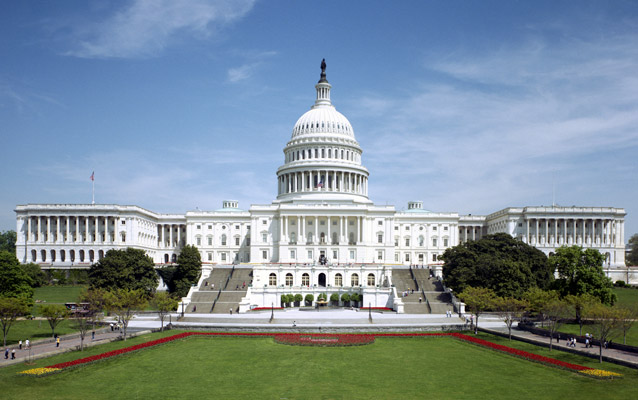 |
| Photo: National Park Services |
The United States Capitol, often called The Capitol or the Capitol Building, is the meeting place of the United States Congress and the seat of the legislative branch of the U.S. federal government. It is located on Capitol Hill at the eastern end of the National Mall in Washington, D.C. Though no longer at the geographic center of the federal district, the Capitol forms the origin point for the district's street-numbering system and the district's four quadrants.
The original building was completed in 1800. It was partly destroyed in the 1814 burning of Washington, then was fully restored within five years. The building was later enlarged, with the addition of a massive dome, and extended wings with expanded chambers for the bicameral legislature, the House of Representatives in the south wing and the Senate in the north wing. Like the principal buildings of the executive and judicial branches, the Capitol is built in the neoclassic style and has a white exterior. Both its east and west elevations are formally referred to as fronts, though only the east front was intended for the reception of visitors and dignitaries.
5. Golden Gate Bridge, San Francisco
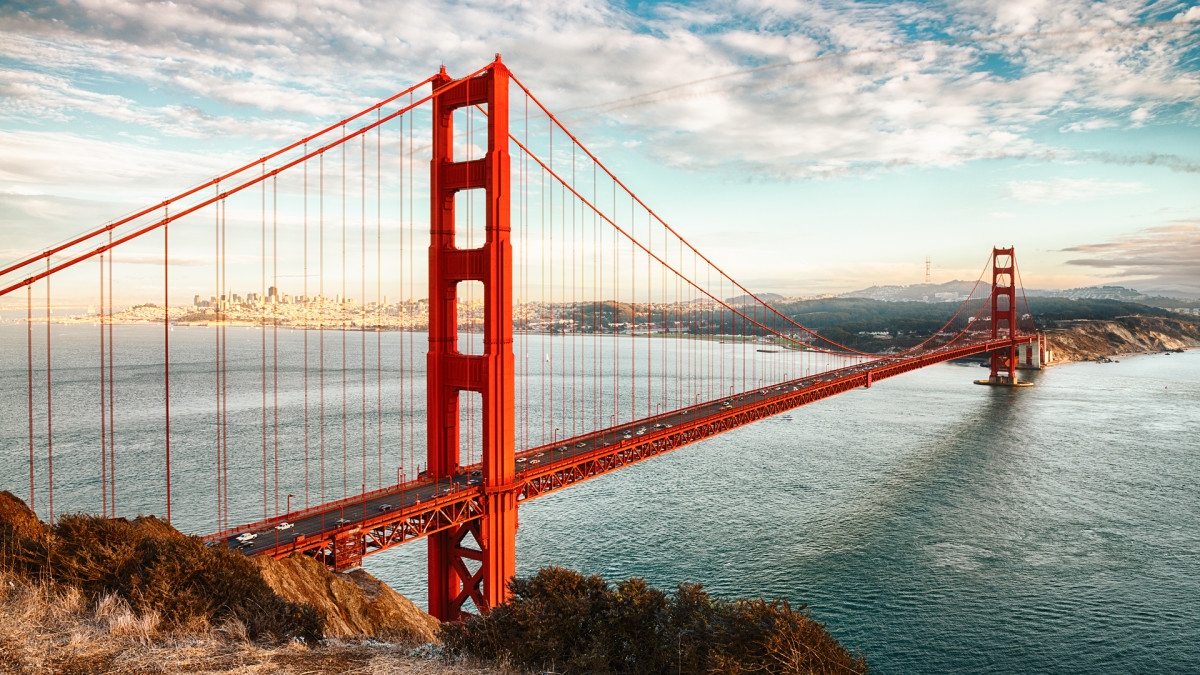 |
| Photo: Getty Images |
The Golden Gate Bridge is a suspension bridge spanning the Golden Gate, the one-mile-wide (1.6 km) strait connecting San Francisco Bay and the Pacific Ocean. The structure links the U.S. city of San Francisco, California—the northern tip of the San Francisco Peninsula—to Marin County, carrying both U.S. Route 101 and California State Route 1 across the strait. The bridge is one of the most internationally recognized symbols of San Francisco and California. It was initially designed by engineer Joseph Strauss in 1917. It has been declared one of the Wonders of the Modern World by the American Society of Civil Engineers.
The Frommer's travel guide describes the Golden Gate Bridge as "possibly the most beautiful, certainly the most photographed, bridge in the world." At the time of its opening in 1937, it was both the longest and the tallest suspension bridge in the world, with a main span of 4,200 feet (1,280 m) and a total height of 746 feet (227 m).
4. Jefferson Memorial, Washington, DC
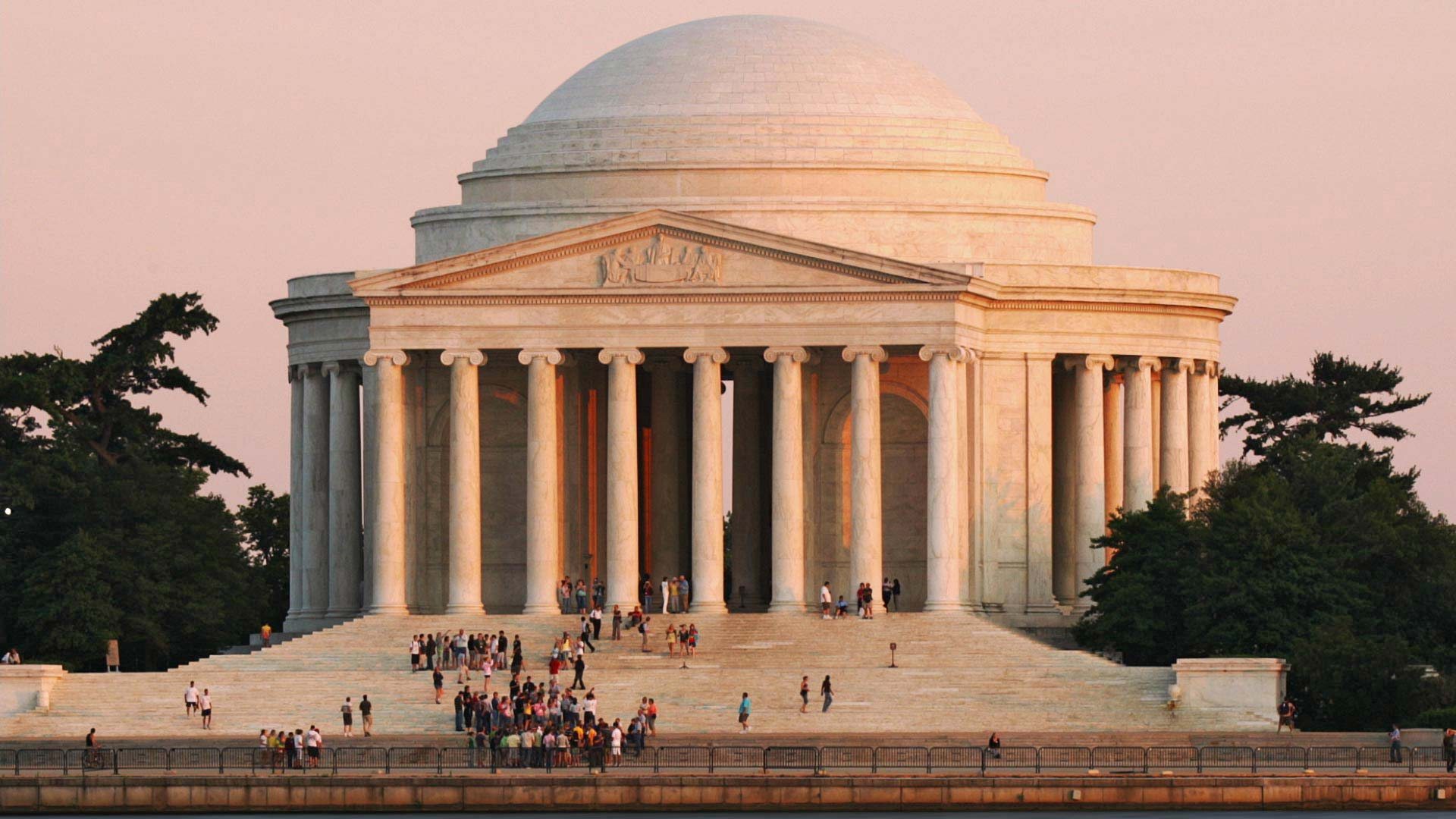 |
| Photo: Britannica |
The Jefferson Memorial is a presidential memorial built in Washington, D.C. between 1939 and 1943 under the sponsorship of President Franklin D. Roosevelt. Roosevelt thought that it was a suitable memorial to the Founding Fathers of the United States and to Thomas Jefferson, the principal author of the United States Declaration of Independence and the founder of the Democratic-Republican Party.
The neoclassical building is situated in West Potomac Park on the shore of the Potomac River. It was designed by John Russell Pope and built by Philadelphia contractor John McShain. Construction began in 1939 and was completed in 1943. The bronze statue of Jefferson was added in 1947. Pope made references to the Roman Pantheon whose designer was Apollodorus of Damascus, and to Jefferson's own design for the rotunda at the University of Virginia. The Jefferson Memorial and the White House form one of the main anchor points in the area of the National Mall in D.C. The Washington Monument was intended to be located at the intersection of the White House and the site for the Jefferson Memorial, but soft swampy ground required that it be situated to the east.
The national memorial is managed by the National Park Service of the Department of the Interior under its National Mall and Memorial Parks division. In 2007, it was ranked fourth on the "List of America's Favorite Architecture" by the American Institute of Architects.
3. Washington National Cathedral, Washington, DC
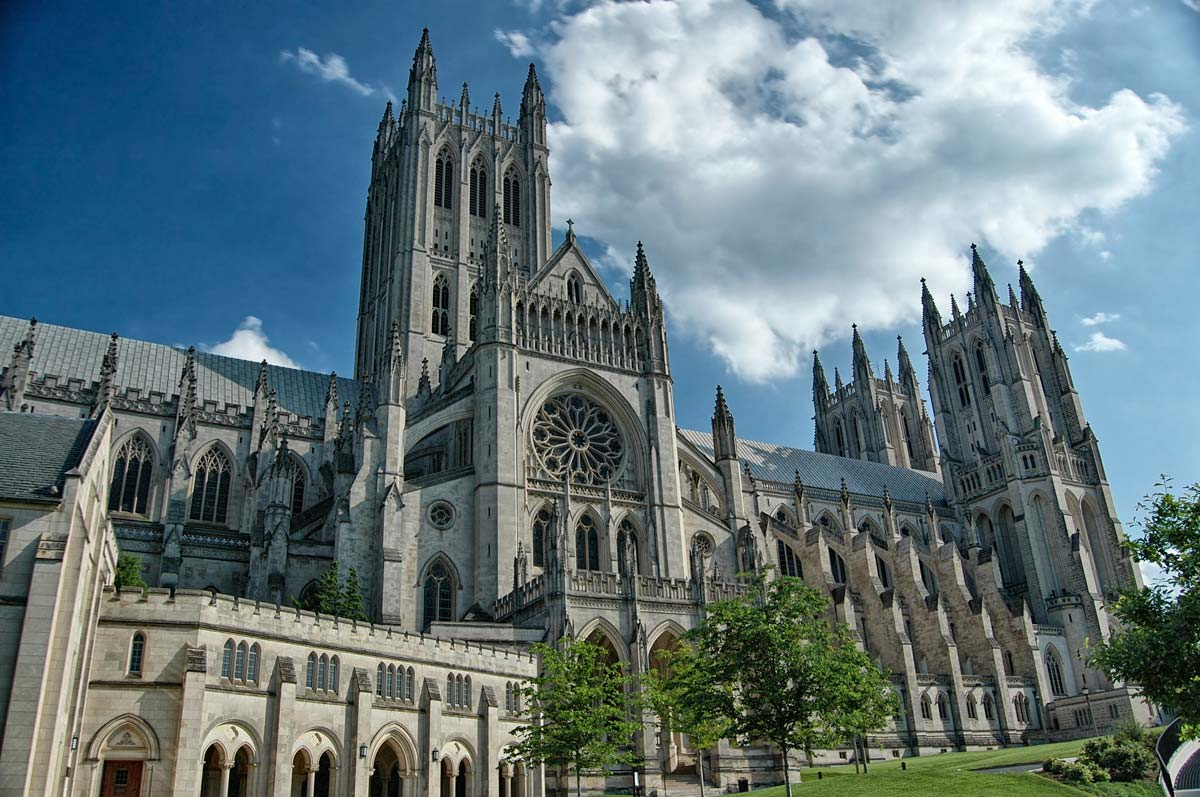 |
| Photo: Flickr |
The Cathedral Church of Saint Peter and Saint Paul in the City and Diocese of Washington, commonly known as Washington National Cathedral, is an American cathedral of the Episcopal Church. The cathedral is located in Washington, D.C., the capital of the United States. The structure is of Neo-Gothic design closely modeled on English Gothic style of the late fourteenth century. It is the second-largest church building in the United States, and the fourth-tallest structure in Washington, D.C. The cathedral is the seat of both the Presiding Bishop of the Episcopal Church, Michael Bruce Curry, and the bishop of the Diocese of Washington, Mariann Edgar Budde. Over 270,000 people visit the structure annually.
The Protestant Episcopal Cathedral Foundation, under the first seven Bishops of Washington, erected the cathedral under a charter passed by the United States Congress on January 6, 1893. Construction began on September 29, 1907, when the foundation stone was laid in the presence of President Theodore Roosevelt and a crowd of more than 20,000, and ended 83 years later when the "final finial" was placed in the presence of President George H. W. Bush in 1990. Decorative work, such as carvings and statuary, is ongoing as of 2011. The Foundation is the legal entity of which all institutions on the Cathedral Close are a part; its corporate staff provides services for the institutions to help enable their missions, conducts work of the Foundation itself that is not done by the other entities, and serves as staff for the Board of Trustees.
2. The White House, Washington, DC
 |
| Photo: White House |
The White House is the official residence and workplace of the president of the United States. It is located at 1600 Pennsylvania Avenue NW in Washington, D.C., and has been the residence of every U.S. president since John Adams in 1800. The term "White House" is often used as a metonym for the president and their advisers.
The residence was designed by Irish-born architect James Hoban in the neoclassical style. Hoban modelled the building on Leinster House in Dublin, a building which today houses the Oireachtas, the Irish legislature. Construction took place between 1792 and 1800 using Aquia Creek sandstone painted white. When Thomas Jefferson moved into the house in 1801, he (with architect Benjamin Henry Latrobe) added low colonnades on each wing that concealed stables and storage. In 1814, during the War of 1812, the mansion was set ablaze by the British Army in the Burning of Washington, destroying the interior and charring much of the exterior. Reconstruction began almost immediately, and President James Monroe moved into the partially reconstructed Executive Residence in October 1817. Exterior construction continued with the addition of the semi-circular South portico in 1824 and the North portico in 1829.
1. Empire State Building, New York City
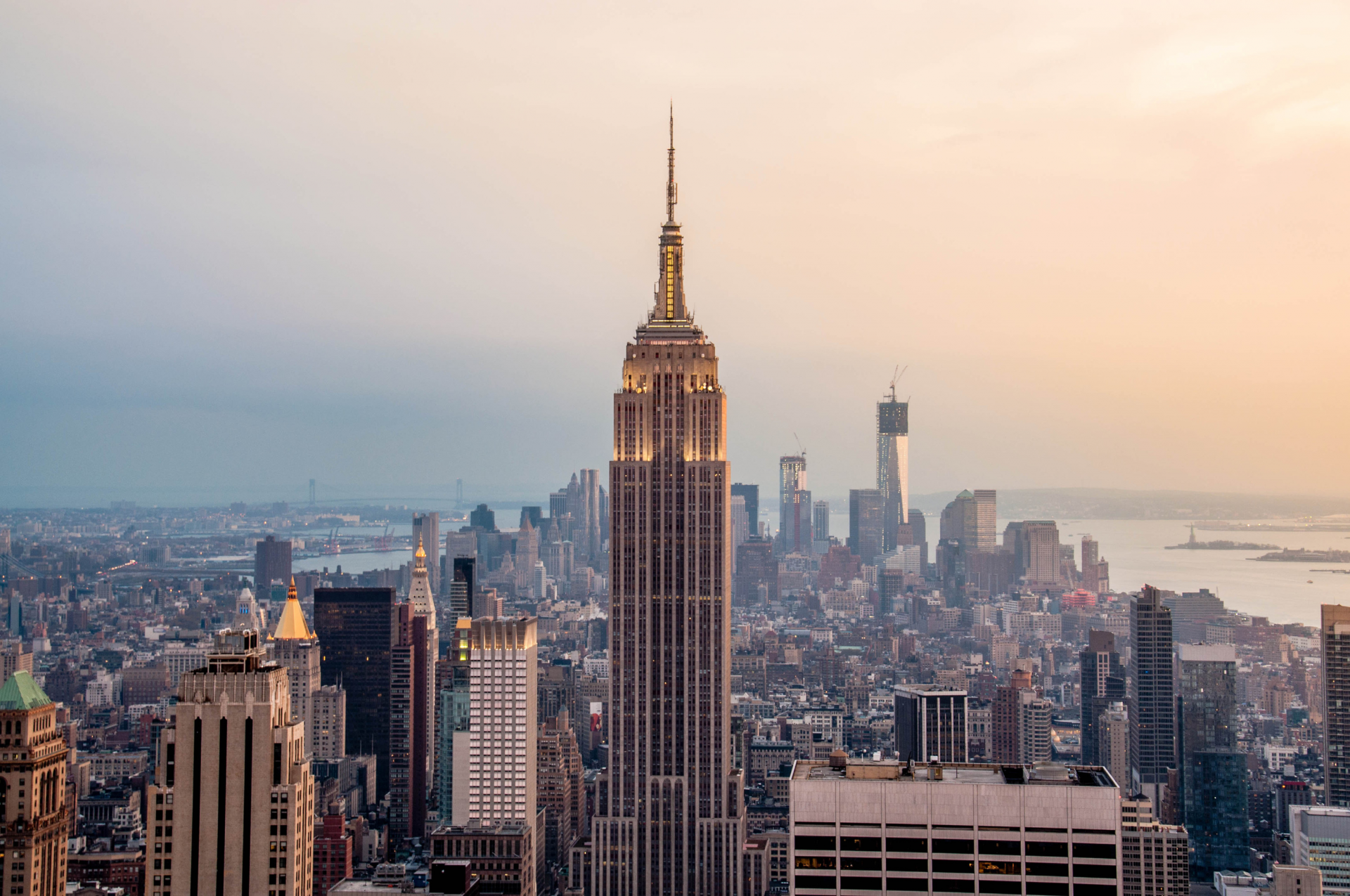 |
| Photo: Timeout |
The Empire State Building is a 102-story Art Deco skyscraper in Midtown Manhattan in New York City, United States. It was designed by Shreve, Lamb & Harmon and built from 1930 to 1931. Its name is derived from "Empire State", the nickname of the state of New York. The building has a roof height of 1,250 feet (380 m) and stands a total of 1,454 feet (443.2 m) tall, including its antenna. The Empire State Building stood as the world's tallest building until the construction of the World Trade Center in 1970; following the latter's collapse in 2001, the Empire State Building was again the city's tallest skyscraper until 2012. As of 2020, the building is the seventh-tallest building in New York City, the ninth-tallest completed skyscraper in the United States, the 49th-tallest in the world, and the sixth-tallest freestanding structure in the Americas.
The site of the Empire State Building, in Midtown South on the west side of Fifth Avenue between West 33rd and 34th Streets, was developed in 1893 as the Waldorf–Astoria Hotel. In 1929, Empire State Inc. acquired the site and devised plans for a skyscraper there. The design for the Empire State Building was changed fifteen times until it was ensured to be the world's tallest building. Construction started on March 17, 1930, and the building opened thirteen and a half months afterward on May 1, 1931. Despite favorable publicity related to the building's construction, because of the Great Depression and World War II, its owners did not make a profit until the early 1950s.
 Top 10 Most Popular Sports in The US Top 10 Most Popular Sports in The US Which is the most popular sport in America today? Here we have a list of ten of the most popular sports in the USA. |
 Top 10 Baby Names Most Popular Among Billionaires Top 10 Baby Names Most Popular Among Billionaires Choosing a name for your baby is one of the trickiest decisions a parent will have to make. Check out a list of top 10 ... |
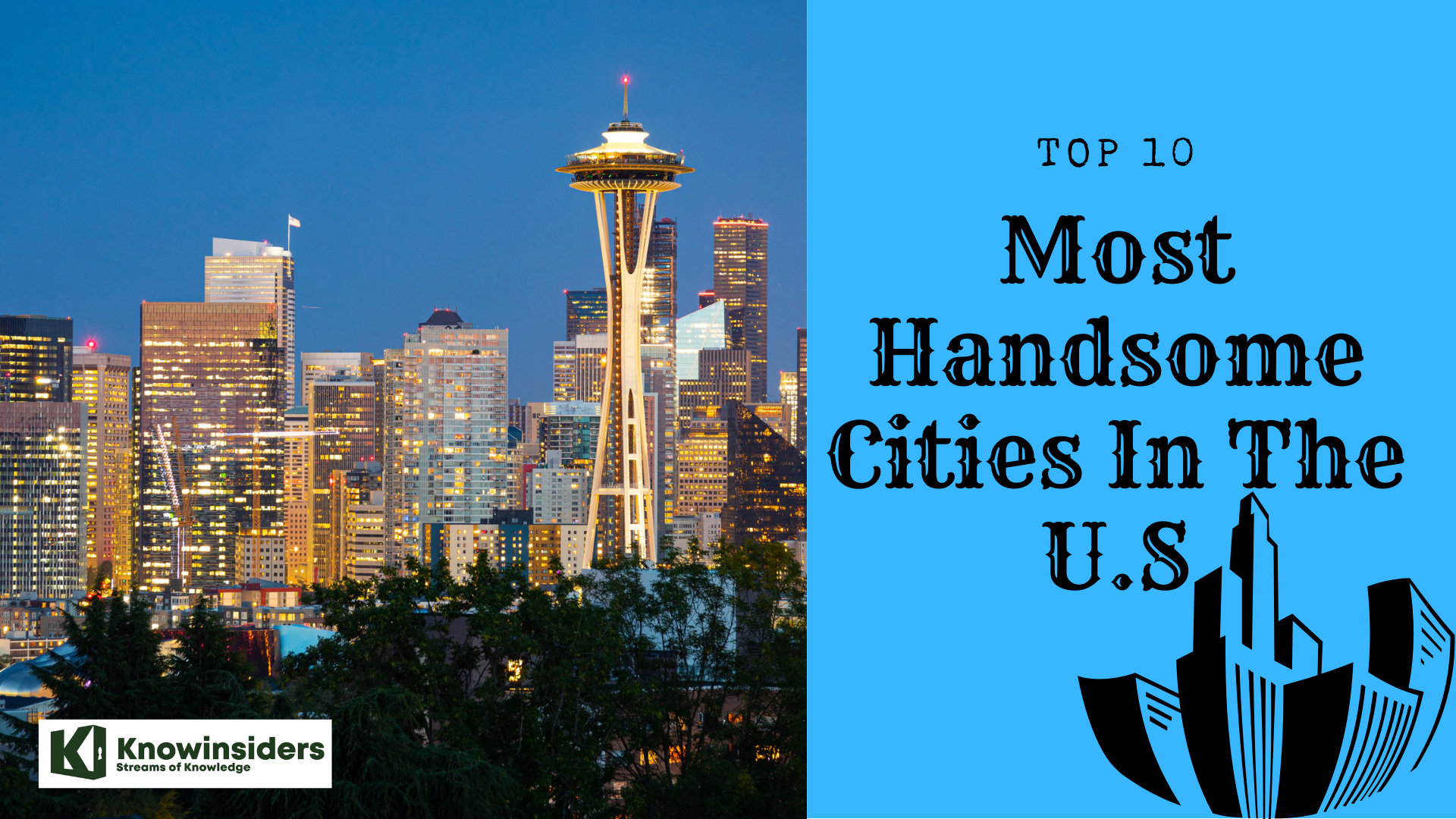 Top 10 Most Handsome Cities In The US Top 10 Most Handsome Cities In The US Check our the list of top 10 most handsome cities in the U.S in 2021. |
 Top 10 Most Wanted Fugitives By FBI In The US Top 10 Most Wanted Fugitives By FBI In The US There are very dangerous people out there that can cause harm to the society, and here is the top 10 most wanted fugitives by the ... |


























